Infectious diseases
The Wimbledon Isolation Hospital, built by the Borough Council at a cost of £23,000, opened in December 1906. It was one of the few isolation hospitals not to be built near a sewage farm, but next to the railway! The Hospital replaced the Durnsford Road Fever Hospital, an iron hut which had become unsuitable for medical use.
Those admitted were suffering from scarlet fever, diphtheria, enteric disease, epysipelas, meningitis, etc. In addition, treatment was provided for certain cases of puerperal sepsis.At the outbreak of WW2 in 1939 the Hospital had 106 beds.
In 1945 a survey was initiated by Aneurin Bevan, the Minister of Health, on the hospital services in London and surrounding regions. The surveyors regarded the Hospital as rather old, and suggested possible closure. In October 1946 the Surrey County Council proposed that the Hospital be made available also to patients from the Borough of Kingston. However, in October 1947, another proposal was made - that it become a blood transfusion centre. In the same month the Minister of Health suggested to the local authority that he should disclaim the Hospital, under Section 6 (3) of the National Health Service Act, 1946. The Council agreed, with the intention of converting the buildings for use as housing accommodation for 36 families (at this time some 2,000-3,000 families were on the local authorlty housing list). However, in April 1948, the Minister decided it would not be possible for him to disclaim the Hospital after all, as it would be needed to provide hospital services.
After five years of uncertainty as to its future, the Hospital joined the NHS on the 'Appointed Day', 5th July 1948. It came under the control of St Helier Group Hospital Management Committee, part of the South West Metropolotian Regional Hospital Board.
By November 1949 it was virtually empty and was closed for further admissions. A small part of it was used by the Emergency Bed Bureau as offices and for storage, but the empty buildings began to deteriorate. It had been mooted to convert the Hospital into a home for the elderly chronic sick, but this never happened because of financial considerations and the unsuitability of both the site and the buildings for such a purpose.
The Hospital closed in December 1949.
Present status (November 2008)
The Hospital building was used by the Wimbledon Borough Council for housing accommodation. It was demolished in the early 1950s but the Nurses' Home continued to be used as municipal housing for a while.
The Hospital site now contains Poplar Court, a small housing estate.
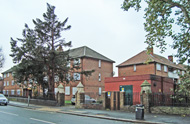
The old gateway on the southeast corner of Poplar Court may be related to the Hospital era.
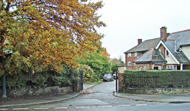

The southwest corner also has old gateposts.
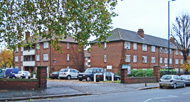
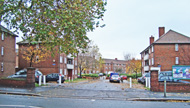
The main entrance to Poplar Court (left). Looking into Poplar Court (right).
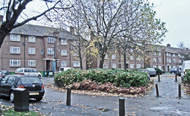

Inside Poplar Court.
Ellis H 1931 Annual Report of the Medical Officer of Health. Borough of Wimbledon, 14.
Pocklington E 1908 Annual Report of the Medical Officer of Health. Borough of Wimbledon, 9.
http://edithsstreets.blogspot.co.uk
http://hansard.millbanksystems.com
http://merton.past-view.com (1)
http://merton.past-view.com (2)
http://photoarchive.merton.gov.uk
www.britainfromabove.org.uk
www.british-history.ac.uk
www.theyworkforyou.com
Return to home page